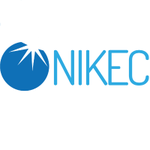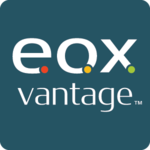Description

Zarafa

Hubshare
Comprehensive Overview: Zarafa vs Hubshare
Overview of Zarafa and Hubshare
a) Primary Functions and Target Markets
Zarafa:
Zarafa was an open-source groupware application designed to provide email, calendar, and collaboration services similar to Microsoft Exchange. It primarily facilitated communication and team collaboration by offering email server solutions, personal information management, and seamless integration with Microsoft Outlook.
- Primary Functions:
- Email and calendar management.
- Task and contact organization.
- Integration with Microsoft Outlook for a familiar user experience.
- Web access to email with a browser interface.
- Target Markets:
- Small to medium-sized enterprises (SMEs) looking for cost-effective email solutions.
- Organizations seeking open-source alternatives to proprietary email and collaboration suites.
Note: Zarafa ceased active development and support in its original form and was rebranded as Kopano in 2017. Kopano continues to develop the product under a new name with improved features.
Hubshare:
Hubshare is a digital workspace and collaboration platform that focuses on enhancing client engagement and collaborative work environments by centralizing and sharing information securely within workgroups or teams.
-
Primary Functions:
- Secure file sharing and knowledge transfer.
- Enhanced client engagement through collaborative features.
- Customizable dashboards for easy access to relevant information.
- Integration with third-party applications like Office 365, iManage, and various CRM solutions.
-
Target Markets:
- Professional service firms, such as legal, accounting, and financial services.
- Any business that requires secure, client-focused collaboration and information sharing.
b) Comparison in Terms of Overall Market Share and User Base
Zarafa:
As an open-source solution, Zarafa had a niche market predominantly among organizations favoring open-source and self-hosted solutions. Its market share was notably smaller compared to large established proprietary solutions like Microsoft Exchange and Google Workspace. With its transition to Kopano, its direct market footprint decreased, but Kopano serves a similar audience with an expanded feature set.
Hubshare:
Hubshare's market share is specific to industries requiring secure collaboration and client interaction capabilities. It is not as widely adopted as mainstream platforms like Microsoft Teams or Slack but holds a strong position in its niche, especially in professional services. Its user base consists of firms prioritizing client-centric collaboration environments.
c) Key Differentiating Factors
Zarafa:
- Open Source: Offered a fully open-source email and collaboration solution, appealing to enterprises looking for customizable and self-hosted solutions.
- Outlook Integration: Provided native integration with Microsoft Outlook, which was a significant selling point for users seeking an alternative to Microsoft Exchange.
- Community and Customization: As an open-source product, it allowed deep customization by robust community support before transitioning to Kopano.
Hubshare:
- Client-Centric Features: Designed explicitly for improving client engagement, thereby heavily emphasizing secure and tailored client collaboration.
- Dynamic and Visual Dashboards: Offers highly customizable dashboards that allow firms to communicate data and information visually and effectively.
- Industry Specific Solutions: Tailors its features to meet the unique needs of professional service industries, setting it apart from more generic collaboration tools.
In conclusion, both Zarafa (now continued as Kopano) and Hubshare serve distinct markets with unique capabilities geared towards enhancing productivity and collaboration but cater to different organizational needs and industry specifics. Zarafa's open-source background and transition to a new brand highlight its roots in flexibility and customizability, whereas Hubshare's focus on client-centered secure collaboration distinguishes it in professional service environments.
Contact Info

Year founded :
Not Available
Not Available
Not Available
Netherlands
Not Available

Year founded :
2015
+33333-1057-1440
Not Available
France
http://www.linkedin.com/company/hubshare
Feature Similarity Breakdown: Zarafa, Hubshare
As of my last update, here is a feature similarity breakdown for Zarafa and Hubshare, focusing on their core features, user interfaces, and any unique features that may set them apart.
a) Core Features in Common
-
Collaboration Tools: Both Zarafa and Hubshare provide a suite of collaboration tools that allow users to communicate and share information efficiently within teams.
-
Document Management: They offer document management systems where users can store, organize, and share documents securely.
-
Email Integration: Zarafa, being more of an email and messaging platform, naturally integrates with email services. Hubshare also supports email notifications and interactions as a part of its collaborative features.
-
User Access Control: Both platforms have features for defining user roles and access permissions to manage data security and control who can view or edit documents.
-
Mobile Access: They provide access via mobile devices, enabling users to work on the go.
-
Integration Capabilities: Both are designed to integrate with various third-party applications, enhancing their functionality and synchronizing data across platforms.
b) User Interface Comparison
-
Zarafa: The user interface of Zarafa traditionally mirrors that of Outlook, particularly because it is an open-source groupware application designed to mimic the familiar look and feel of Microsoft’s email interface. This approach makes it easier for users transitioning from Outlook.
-
Hubshare: Hubshare, on the other hand, offers a more modern, web-based interface that is intuitive and designed with collaboration in mind. It focuses more heavily on the sharing and portal aspect of collaboration, which can include dashboards and customizable workspaces.
c) Unique Features
-
Zarafa:
- Email Server Capabilities: Zarafa is more email-focused, offering a robust email server solution with advanced messaging capabilities similar to Microsoft Exchange.
- Open-Source Flexibility: As an open-source solution, Zarafa can be customized extensively to fit specific organizational needs, allowing developers to adapt the software beyond standard capabilities.
-
Hubshare:
- Client Portal Functionality: Hubshare strongly emphasizes creating client portals, which allow controlled sharing of documents and collaboration with external stakeholders.
- Dashboard and Reporting Features: Offers advanced dashboard capabilities that enable users to visualize and report data efficiently within the platform, catering to a business environment focused on data-driven decision-making.
- Focus on User Experience: Adds features that are specifically designed to enhance the user experience, such as customizable workspaces and tailored interfaces for different business sectors.
This high-level comparison covers the core aspects of each platform's offerings. However, it's recommended to delve deeper into recent updates or user feedback for both products for the most current evaluation, as software platforms frequently evolve.
Features

Security and Privacy
Integration and Compatibility
Communication Tools
Collaboration Features
User Management

Not Available
Best Fit Use Cases: Zarafa, Hubshare
Zarafa and Hubshare are collaboration and communication platforms designed to enhance productivity and information sharing within organizations. They cater to different needs and find their best fit in various types of businesses and projects.
Zarafa
a) For what types of businesses or projects is Zarafa the best choice?
- Zarafa is a groupware solution with a focus on email management, calendaring, and task management, offering an open-source alternative to Microsoft Exchange. It is particularly suitable for:
- Small to Medium Enterprises (SMEs): Businesses that require cost-effective solutions with robust email capabilities.
- Organizations with Linux Enthusiasts: Companies that prefer or already have a Linux infrastructure since Zarafa is Linux-based and integrates well within such environments.
- Businesses requiring On-premises Solutions: Organizations that need or prefer an on-premises setup due to data privacy concerns or specific regulatory compliance requirements.
d) How do these products cater to different industry verticals or company sizes?
- Zarafa supports a wide range of industries due to its flexible infrastructure and focus on communication. Industries such as education, healthcare, and government often require secure email communication and would benefit significantly from its capabilities.
- It particularly appeals to small to medium businesses due to its lower cost compared to large proprietary solutions like Microsoft Exchange. Its open-source nature can be attractive for companies needing customization and control over their software.
Hubshare
b) In what scenarios would Hubshare be the preferred option?
- Hubshare is a client portal and collaboration platform designed for secure document sharing and project management. It is highly suitable for:
- Professional Services Firms: Firms like legal, accountancy, and consultancy where client collaboration and secure data exchange are paramount.
- Project-Based Companies: Organizations that manage multiple projects simultaneously and need centralized collaboration between internal teams and external clients.
- Client-Centric Businesses: Businesses where client interaction is frequent and involves sensitive document exchange, necessitating a secure, user-friendly portal.
d) How do these products cater to different industry verticals or company sizes?
- Hubshare caters mainly to industries requiring a high level of client interaction and document management, such as legal, finance, and consulting industries.
- It is scalable and offers customization options to meet the needs of both SMEs and larger enterprises. Companies that need to ensure compliance and maintain client confidentiality highly benefit from its secure document management and sharing capabilities.
In summary, Zarafa is ideal for businesses needing a robust, cost-effective email and communication platform, particularly in Linux environments, while Hubshare is better suited for professional services firms and project-based businesses that require secure document sharing and client collaboration. Both solutions have their niches and provide tailored services that appeal to different industry needs and organizational sizes.
Pricing

Pricing Not Available

Pricing Not Available
Metrics History
Metrics History
Comparing undefined across companies
Conclusion & Final Verdict: Zarafa vs Hubshare
To provide a comprehensive conclusion and final verdict regarding Zarafa and Hubshare, it is important to analyze both products based on their features, functionality, user experience, support, and overall value.
a) Best Overall Value
Overall Value Verdict:
- Hubshare tends to offer the best overall value, especially for teams and businesses focused on collaborative workspaces and client engagement.
The reason Hubshare often comes out ahead in terms of value is its comprehensive platform tailored for collaboration and seamless sharing, which is particularly beneficial for professional service firms and client-centric organizations. Its robust features for interactive client portals, comprehensive file management, and customizable workspaces align well with modern business needs for secure and efficient collaboration.
b) Pros and Cons
Zarafa:
Pros:
- Email-Focused: Offers a strong email server solution, which can be ideal for businesses primarily seeking a solid, cost-effective email communication platform.
- Open Source Option: Being open source, Zarafa can be more flexible in terms of customization and integration with other open source tools.
- Enterprise Compatibility: Compatible with Microsoft Outlook clients, which makes it a good replacement for organizations transitioning from Microsoft Exchange servers.
Cons:
- Limited Modern Collaboration Features: Compared to Hubshare, Zarafa falls short on advanced collaboration features like client portals and interactive workspaces.
- Legacy Support Issues: With Zarafa having transformed and absorbed into other projects (such as Kopano), support and updates may be less consistent.
- Potential Complexity: Requires a certain level of technical expertise to deploy and maintain especially for small to medium enterprises focusing primarily on communication solutions.
Hubshare:
Pros:
- Collaboration-Centric: Offers robust collaborative features, perfect for businesses requiring interactive and personalized client engagement tools.
- Versatile Workspaces: Provides highly customizable workspaces that can be tailored to specific business processes or client needs.
- Enhanced Security: Focuses on secure file sharing and management, which is crucial for maintaining confidentiality and compliance in business operations.
Cons:
- Cost Consideration: Generally, the costs may be higher compared to open-source alternatives like Zarafa for organizations that do not require advanced collaborative functionalities.
- Learning Curve: May require training or a period of adjustment for teams to fully utilize its extensive features to their potential.
c) Recommendations
-
For Organizations Focused on Email and Open Source Solutions: Zarafa presents a feasible option, particularly if integration with existing open-source systems is a priority and budget considerations undershoot collaborative requirements.
-
For Collaboration and Client Engagement Needs: Hubshare is the recommended choice for businesses that prioritize enhanced collaboration features, client-facing solutions, and secure document management. These capabilities are key for entities looking to improve internal and external communications and streamline project workflows.
-
Evaluation of Specific Business Needs: Users are encouraged to evaluate both platforms based on their specific operational requirements. Factors to consider include the importance of email vs. collaboration, budget constraints, existing IT infrastructure, and user familiarity with collaborative tools.
Ultimately, the decision between Zarafa and Hubshare should hinge on the specific use-case scenario, prioritizing either communication efficiency or advanced collaborative functionalities to derive maximum benefit.
Add to compare
Add similar companies




